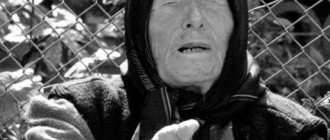about the project
स्वप्ननिद्राज्ञानालम्बनं वा ॥ ३८॥
The stability of manas is achieved by relying on knowledge gained in dreams.
/Yoga Sutras 1.38/
Initially, the project developed as a portal for the interpretation of dreams, where, in addition to the author’s dream book “Raido,” the theory of dream interpretation, a thematic library were presented, an analysis of popular dream books was given, leading experts in dream interpretation were announced, and much more. Further, the project was supplemented with the services of an astrologer and a psychoanalyst, since the interpretation of dreams is of interest to people seeking personal development, and it often requires turning to related areas of knowledge about a person. Finding a good astrologer was not difficult. Your humble servant Yuri Chegarovsky, the author of this project, is not only a master of dream decoding, but also a professional astrologer since 1988. It's the same with psychoanalysis. Consultations are conducted by my wife, Rada Chegarovskaya, a certified specialist, member of the European Confederation of Psychoanalytic Psychotherapy.
Nevertheless, the basic component of the project remains the topic of dream interpretation.
Dreams are the voice of the Soul!
Frankly, oneirology, the science of dream interpretation, although its existence spans thousands of years, is in an unfavorable state. The three masters Freud, Jung and Meneghetti presented some fragmentary knowledge, they are certainly geniuses, but the school of dream interpretation still does not exist. How is there no understanding in the public consciousness, or better yet, the collective unconscious, that dreams are the voice of the Soul! The point is not to interpret the dream, but to hear your soul, or rather see it. We are not taught to hear and understand our Soul, its voice is quiet and kind, it loves us and never forces us to do anything. At night, a person’s mind calms down, and in dreams the Soul appears to him - to tell him what is really happening, who is his friend and who is his enemy, where is the road to the Temple and where is the deception. Enter the temple of your Soul. We hope and believe that our school will become the gateway to the temple.
We have prepared the “Raido” dream book for you; it is not like all the others. If you have already addressed them, you are probably convinced that they interpret things differently, sometimes like day and night. More details about popular dream books here. Our dream book will help you navigate the meanings of dreams; it is compiled on the basis of many years of experience. The dream images in our collection are accompanied by examples that are not found anywhere else in the world. Yes, we will disappoint you, our dream book is complex and does not give unambiguous interpretations of “I dreamed about this, this will happen.” We don't have any sweet pills for you. But for those who take the trouble to truly understand the meanings of dreams, real changes in fate for the better are guaranteed.
Dreams are the road to truth! You need to be able to decipher dreams, each dream is unique, the same image can have different meanings for different people in different situations. Be that as it may, from phantasmagoria, absurdities, horrors, incomprehensible events, a bewitching and beautiful, often shocking in its revelations, but always clear picture emerges: hidden desires, the true driving forces of a person, prohibitions, the influences of others, the causes of his illnesses, depressions , disasters….
On our portal you will find as complete information as possible about sleep and dreams. Here you will find materials about leading experts and dream interpretation systems. There is an excellent library that contains the best books about dreams, presents the experience of masters of lucid dreaming, topics of scientific research on the physiology of sleep, etc. Enough space is devoted to a critical analysis of the situation in the field of dream interpretation.
Our project continues to develop gradually, which largely depends on your activity and interest.
The authors of the Raido dream book have been actively working on this topic since 1998.
You can take our training course in dream interpretation,
and also order an individual interpretation of your sleep.
© Dream portal “Raido”. Dream Interpretation "Raido"
Dream Interpretation Meneghetti
Meneghetti's dream book is a source for interpreting images, developed by the famous Italian psychologist. For contemporaries, this is not the simplest collection, since it contains many complex and confusing (at first glance) concepts. However, it is necessary to take into account that it was created by a person who devoted most of his life to psychological practice. Therefore, the interpretation of dreams according to Meneghetti’s dream book is considered one of the most reliable from the point of view of modern psychiatry.
Antonio Meneghetti is a famous figure who was involved not only in psychology. He is also considered an artist, philosopher and musician. In his youth he was even a priest, but not for long. The renunciation of rank took place in favor of psychiatry, which the author of the dream book did not regret later.
It is he who is credited with the development of ontopsychology. It has rather ambiguous postulates, which is why in some countries it is completely prohibited, while in others it is considered the basis of fundamentals and is taught in state educational institutions.
The interpreter himself has a very rich experience of communicating with patients in psychiatric clinics. He worked closely with them for many years, and conducted at least 10 therapy sessions a day. Subsequently, Meneghetti composed his own concepts, which formed the basis of ontopsychology.
Since the developer of the dream book’s area of interest lay in the field of psychiatric science, he paid attention specifically to the interpretation of the dreamer’s personality. The author considered any dreams to be a manifestation of a person’s consciousness, the characteristics of his character and behavior. His collection focuses on the inner world of the sleeper, and not on a possible prediction of the future.
From the point of view of a psychologist, at night the formation of a person as an individual occurs. It is at this time that it is easiest to reveal the secrets that the subconscious conceals. If you use the information contained in stories correctly, you can achieve impressive personal growth, as well as well-being in the real world. After all, a mature person has a much greater chance of success.
Meneghetti pointed out that the images that appear at night are beyond the control of man. This is something unconscious. Consciousness is structured in such a way that it cannot fully evaluate real events. And only unconscious night visions, which are not limited by anything and are not restrained, provide the key to real understanding.
In dreams you can find a hint to solve a particular problem, an answer to a question of interest. Events that happen in the real world always leave their mark on the realm of dreams. They concern only the dreamer himself, but not the people around him.
This dream book is not easy to use, since the terminology contained in it may not be simple enough for the average person. There are no usual and simple definitions here. To decipher the meaning of a dream according to this interpreter, you will have to delve into its contents.
Text of the book “The World of Images”
Antonio Meneghetti World of images. A Brief Guide to Interpreting Images and Dreams
Antonio Meneghetti
PRONTUARIO ONIRICO
Ontopsicologia Editrice 2012
Introduction to the “Absurd” of images as a way to obtain a criterion of reality
Imagogy is a conscious and voluntary experience of reading active images that reflect the integrity of individual existence at the conscious and unconscious levels.
A dream is an involuntary experience of images.
Often our “I” is frivolous about itself, the place and time of its existence. The only thing that so often saves us is our innate system of self-regulation. Indeed, representing a continuous movement, unique and changing every moment, we nevertheless follow in our development stagnation, conscious attitudes of society, logical habits, parameters, dogmas, while counting on excellent health, happiness and self-realization.
However, life does not accept stagnation. This is a constant movement that forms and transforms itself, and since the facts of individual life are such, then our rational “I” with all its knowledge should be recognized as absurd, since it stamps reality with the help of fixed patterns.
When we manage to penetrate, in some way look into this center of basic self-regulation of all human existence, we begin to understand a lot. Unfortunately, it is not easy to connect with your own fundamental reality,
and we understand this as soon as we decide to undertake internal research. “Inner exploration” means finding that base point from which I create reality and I “am” reality for myself and others.
My “I”, my thoughts and decisions are preceded by a moment that defines me as reality, as a certain model: a man, a woman, a given place, a given event. This moment determines all other aspects. If we need the most reliable and stable support to confront the difficulties, obstacles and problems that arise behind the back of our tiny “I”, our insignificant unity, what can serve as a guide for us?
If we turn to the outside for help, we move even further away from our fulcrum, which is unknown to our consciousness, but at the same time is life. From that point that grants existence, causing a feeling of pride in one’s life and dissatisfaction with everything: objects, personalities that oppose us.
Thus, the unconscious is not the abode of perversions, delusions and wild instincts, but the basis of the order through which we find reality.
This point, which makes us real, is also the quantum of reason, determination, efficiency. However, to enjoy this inexhaustible source, you need to be able to find it. One should show maximum humility by becoming, in a certain sense, a disciple of this reference point - greater than any sage, teacher, philosopher or revelation.
Imagogy gives us access to our reference point. What does the determination to carry out imagogy mean? Much. It is enough to imagine that every moment, lasting less than a second, thousands of pieces of information pass through our body, through our brain. However, in an instant, at best, we perceive one message, and within a few seconds we manage to catch another one.
What we call the unconscious, among other things, is the global totality of this continuous flow of information coming to us from the environment. The environment is the entire reality with which we interact. In other words, any real object “introduces information data into us.” From this flow of information we catch only one single message, but even this, in most cases, corresponds to the thematic selection previously laid down in us. Often we spend a whole day and even a month subjugated by some obsession, by a single piece of information, while an endless stream of metabolic information of life rushes past us. From childhood, we are given a certain theme: to capture a given type of face, voice, language, etc. Of the ten words, we comprehend only the one on the basis of which we were created earlier.
Imagogy allows one to penetrate into this immense universality and simultaneity that is life. But for this it is necessary to abandon the fixed rational description of events, habitual memories, since they represent an “obsessive pattern” that blocks all other information channels of our life. In this case, I am not calling for the abandonment of reason or its undervaluation, but I believe that it should not be considered exceptional, thereby limiting the bandwidth of our perception of reality. Reason is just a measure, one of the evaluation criteria. The point is that it is necessary to carry out a complete era[1] 1
Epoch - in phenomenological experience means discarding all received opinions about an object, necessary in order to make its essence accessible.
Note
ed. [Close] the mind, absolutely suspending its activity for a moment, in order to comprehend that reality, access to which is blocked by the mind, which is unable to contain it within itself. So, imagogy allows us to enter the world of personality integrity. The images that are revealed to a person in the process of imagogy are “energy configurations”, “units of reality”.
In the process of imagogy, the unconscious cannot bluff. If a person has a certain image, even if it seems stupid or false to his consciousness, it is in any case real, since the unconscious, if not touched[2] 2
Touch (Italian toccage - from Latin tecumago - I am the action in you, we act together).
A concept that defines the immediacy of reality. For more details, see Meneghetti A. Textbook on ontopsychology.
– M.: NF “Antonio Meneghetti”, 2015.
Note.
ed. [Close], then he doesn’t see it. It is impossible to conceive of something that does not exist: either something exists, or it absolutely does not exist. The unconscious is driven by the weight of reality. Entering into communication and manifesting itself in various images, it exists, and if it exists, it tells the story. It is incapable of inventing something that does not exist, because it does not know hope, assumptions, ideological fabrications, or the idle talk of cultural schizophrenia.
In imagogy, as in dreams, images arise with the help of “starters”, points of reality. I would say that an image is a shell that covers a part of reality. Despite the fact that in a rational presentation the image appears as something “apparent to me,” it remains as real as a punch in the eye, like a gentle touch, like an emotion that causes trembling or exaltation, because it is part of life.
In imagogy and in dreams, the main processes of the unconscious are “dynamic”, “energetic”. We perceive them as just words, fiction, that is, as something that may not correspond to reality, since it is a projection of our logic. We believe that they are similar to ideas, our logical-dialectical constructions. We try to adapt the unconscious material of dreams and imagogics to the obsessive demands of the mind. Therefore, when, after a oneiric analysis, I tell a person that he will soon develop a cyst, this means that programming has been “launched” in the body, providing for the occurrence of a cyst. After some time, it is enough to do the necessary tests, and the cyst will be detected. The fact exists, it is real, without even becoming historical from our usual positions of comprehending reality. This is why we cannot understand our unconscious, our true basis, persisting in our rational delusion even when it is revealed to us. The mind makes a judgment by “projecting” empty, meaningless assessments onto pressing reality. The “I” or mechanical complex constantly controls us, gives us a distorted vision of reality, again reducing us to a schizophrenic perception of it.
Engage in imagogy[3]3
The methodology of imagogy, as well as the definitions of image and dynamics, are described in more detail in the book by A. Meneghetti.
Image as an alphabet of energy.
– M.: NF “Antonio Meneghetti”, 2014.
[Close] is easy because the mediation of reality occurs instantly. The difficulty lies in the realistic identification of images, including in the rational sphere, in consciousness. Imagogy is similar to a semantic field: it is pure reality, it is radiation, modulation with intensity of different frequencies.
An image that appears during imagogy, in a dream, or during other arbitrary associations is a configuration of dynamic vector orientation.
Each image corresponds to a method or direction of energy movement.
The image indicates the exact direction. In the same way, by observing a person performing any action, one can predict from his first movements what the subsequent results will be. The possibility of comprehending the consequences of a given causality, which at first is still uncertain, expresses the vectorial orientation of this dynamics, which is later concretized as a certain fact, in which a historical event is then traced. In the image we see the energetic directions of the unconscious, that is, our life: they can manifest themselves both in the form of growth, positivity, spontaneity, and in the form of defense if the “I” is captured by negative psychology or the unconscious signals the presence of a deviation monitor. In this case, the image shows “how” the unconscious is afraid of this, “how” it is distorted, “how” it warns about it.
Imagogy allows you to achieve the highest integrity of self-perception in a personal life situation and, therefore, enter into an event that reveals the evidence of anthropological phenomenology, without falling into absurdity and irrationality.
The essence of imagogy is to restore access to a person’s inner world in order to comprehend all aspects of a certain situation. To this day, rational criticism and scientific analysis act by deductive method, neglecting the main thing - the Inse of man.
Models of operational cognition of ontopsychology can be reduced to the ability to openly introduce a person into the existing world. When a person knows everything in his house, he can put it in order on his own. Disorder is always caused by the actions or presence of something that remains unknown.
Basic Clarifications
A dream is the world of our inner and mostly unconscious reality. It is deterministic: the reality reflected in a dream happens regardless of our plans and hopes.
From the moment when the discoveries of ontopsychology (onto Inse, semantic field and deviation monitor) enriched the research tools of psychology of all times, from Artemidorus to Freud, a rational understanding of the language of dreams became possible.
The inability to interpret dreams is due to individual and social consciousness. The cultural-historical rationality of the logical-historical “I”, based on beliefs, stereotypes, ideology, repression, censorship, memes, social attitudes, is deprived of direct contact with the zone of viscerotonic and naturistic self-creation and the general biopsychic interaction of the integral personality. Consciousness is a collection of partly true, partly false reasoning and, in essence, does not reflect all those objective facts that make up and change a person day by day. The personality of a person, the unity of action in becoming, is clarified through a) what he is, b) those contacts and semantics in which he is included, c) what he produces, d) the physical, psychological and social consequences of his actions.
Consciousness is only partially capable of perceiving reality. A dream captures it entirely, especially critical, new and dangerous moments, since it is an accurate radar. From now on, a person can decipher, read and understand the dream, which always indicates how to achieve identity in accordance with nature's project.
The economy of dreams is always based on the utilitarian-functional interest of one’s own integrity of psychobiological health.
The dream speaks to the subject in the language of naturalistic and biological benefits: everything that increases the dreamer’s health and profit is good, everything that worsens his well-being is bad.
All attitudes and values of the subject are assessed on the basis of the criterion of ontic and biological utility. If some attitude, form of behavior, choice brings the individual more being, more life, then images of fruits, milk, clear water, fish, delicious food, etc. appear in dreams. Otherwise, the symbols will be papers, uniforms, insects, restrooms, etc.
In any case, for ontopsychology, a dream is an unmistakable indication and source of information about the subject and his method of self-government. Oneiric information becomes an effective additional parameter in counseling on issues of existence, economics and relationships.
When a dream reflects the conscious and unconscious reality of the subject, it has three characteristics that formalize the following message: a) what happens or, better, what reason is laid, what is carried out (the causal effectiveness of the symbol), b) to whom or because of whom the action unfolds and in what direction (function or purpose of the object), c) the connection of emotive energy centered on meaning or symptom (intentional semantics).
In other words, the symbol carries a charge of action, it already produces an action, so it is possible to grasp the intensity of its direction.
The first two moments reflect what and to whom, the third is a quantum of emotion and vibration.
1.
The semantic mediator of any reality is In-se[4]4
For more details, see Meneghetti A.
In-se man.
– SF “Antonio Meneghetti”, 2014
Approx.
ed. [Close] of a person is the first component that formalizes reality as a given individuation in the present.
2.
Since a person represents a unity of action, a kind of self-oriented energetic reality, he inevitably builds a self-evident experience. It is self-orientation that forms the basis of the potential of the “I”, potential consciousness, and, therefore, the act of self-orientation gives a person individuality, distinguishing him from the rest. Obviousness has distinctive features and individuality, that is, a subjective character. Man knows nothing other than what he is. The sign in existence is generated by the causality that it determines in itself. The appearance of a sign suggests that there is only one signifier. Since Inse in its development is always guided by reasons, each sign can correspond to only a single reason.
3.
The discrepancy between the sign and the reason it denotes is caused by the fact that consciousness does not accurately reflect the situation of the entire individual. Nature created man perfect, but his deviated consciousness distorts the coordinates of life. Along with the socio-ethical restrictions imposed in childhood, as well as the constant pressure from everyday memetics and behavior, a person is subject to the influence of the distorting grid, or deviation monitor, that historically accompanies a person. The distorting grid is an interferential complex of reflective neurons that transmit emotions in the form of images, formalizing stable information that distorts subjective reality. As a result, the subject perceives and comes into contact with a non-existent reality. It is a kind of photonic circuit computer located in close proximity to the central cerebral zone. The grid receives, selects and programs organismic data with mechanistic rationality, due to which the individual knows and recognizes himself only in the order predetermined by the program, remaining deviated from his own Dasein. Human logical attitudes and moral habits are the end products of the deviation monitor, which separates and connects the reprogrammed elements of speculative cognition.
4.
Eliminating the action of this cerebral mechanism or other "parasites of the mind" allows a person to become an accurate expression of his own being. Action and reflection, noumenon and phenomenology are revealed as the play of a single Inse.
5.
One of the main reasons for the collapse of modern psychotherapy is that it has not been able to find the key to the meaning of messages from the unconscious[5]5
See the definition of the unconscious in the book Meneghetti A.
Thesaurus.
Dictionary of optopsychological terms. – M.: NF “Antonio Meneghetti”, 2014.
Note.
ed. [Close]. Today, the “human unconscious” means an action that predetermines what a person himself considers an independent decision. The individual, believing himself to be independent in his own decisions, in fact only expresses something that has already been experienced, follows a consciousness that has already been manipulated.
The active unconscious can be recognized by numerous signs, but a person continues to make mistakes when interpreting it. This happens for two reasons:
a) interpretation is always based on a conscious rational projection and on symptoms analyzed on the basis of the same rational criteria;
b) the constant absence of the unconscious component does not allow us to obtain an objective picture.
6.
Ontopsychology knows what is unknown to other sciences, so it can rightfully say: “If you have not known yourself, how can you teach others? If you don’t know who you are, then why do you continue to stubbornly follow your probabilistic knowledge in exploring reality?”
The descent into hell became proof of the existence of heaven. In this case, it was not about the abolition of the pre-established socio-moral and socio-rational order, but about the need for a comprehensive and completely impartial study of all facets of humanity. It was necessary to eliminate all formal logic (hopes, disappointments, successes, failures, analysis, guesses, etc.) and dissolve in the flow of action. It was necessary to become a cell, a blood globule, and awaken only if In-se's action, having completed its path, reached the threshold of reflection. It was necessary to go through the entire action to the end, from the place where the thread began to twist, until the moment of its branching into individual individuations.
Having dissolved in action, the Inse of action united consciousness with being. Although being cannot be replaced by any words, nevertheless words can be verified next to being. Where existence flows, a symbol of existence can be placed. Where there are signals of existence, signs can be placed. In contrast to all the cultural and scientific hype that even today polishes and renews semiology without looking back at being, ontopsychologists pretend that they take the sign very seriously, but in fact they overcome it and live together with being.
7.
For greater clarity, I can give an example. Let us assume that a group of experts dealing with communication problems has created a system of signals, coordinating them according to their meanings. Now they made themselves dependent on signals that corresponded to the concepts of “city”, “mountain”, “house”, “man”, “village”, “source”, etc. Then, to save time and expand the field of activity, They began to think about machine programming of correspondences, strictly adhering to the sign system, and thus interrupted the connection between the signal and the coordinated object.
Initially, this approach provided significant advantages. Over time, due to the high speed of the machine, a huge number of such correspondences appeared. As a result, a huge group of experts was already working on the problems of scientific systematization of information signals. For research, they were given a large building stuffed with computers. Soon after, experts noticed several coding errors caused by the machine. Everything was done to correct them, but over time it became more and more difficult to correct them. Further coding was carried out in accordance with the errors that appeared in the computer program. On the other hand, it was no longer possible to find out what such concepts as “village”, “city”, “source”, incorporated into the machine at the first stage, meant.
Then a man appeared who realized the futility of this symbol system. He wandered wherever his feet led him. The path was long, and then one day he found himself next to this building full of cars. He said nothing, because he understood that the significance of the sign system was so great that the life of the people in this building turned into an existence for the sake of death. He could not speak to them because, due to incorrect coding, they would never understand the meaning of his words. If he, for example, said the word “Milan”, they would imagine the meaning of this word based on the existing stereotype, and not on the actual city.
The only thing left was to start all over again, each time correcting any deviations in the values still in the computer memory. This man knew that the misunderstanding would disappear the minute everyone felt that it existed. On the other hand, the experts already knew that their sign matches were incorrect. If a person knows that he is dying, then before death he can still choose the place where he would like to find peace. If behind a complex and artificial sign I cannot find the fundamental thing that indicates its meaning and action, then now I am alive only to die. But I can still make my choice and go to die where someone else claims to have found a way to correctly reflect the action in the sign. In the first case, I will die anyway, and in the second, I will either die or find the necessary matches.
8.
Ontopsychology deals with the problem of ordering signs, starting from reality.
The difficulties come not from reality as such, but from sign systemism. In fact, it binds a person so much that it deprives him of the ability to consciously and openly invest in reality: for this he pays with his health and the loss of a path that could lead him to success.
Ontopsychology has the power of reality because it excludes sign distortion caused by a deviation monitor or other “parasites of the mind.” Ontopsychology knows the real correspondence between the symbol and reality, or, better said, reality itself suggests the authenticity of the symbol. In the In-se of man, in this operating principle, in this thing, there is a natural refuge of the “I”.
The “I”, feeling good in Indigo reality, itself programs, creates and recognizes all those real symbols that verbalize its earthly and external development.
9.
The manual on imagogy “The World of Images”, which examines the connection of the symbol with the kinematics of dreams, imagogy and fantasies, in practical terms is a comprehensive projection of such a radius of action in which the incomprehensible is allowed to exist unhindered. However, the use of this manual, intended for developmental psychologists, certainly requires basic training in the field of psychodynamics to ensure a high level of accuracy, reliability of psychotherapeutic work and special intuition that allows one to recognize the objectifying semantics behind a sign.
Ontopsychology accepts already known concepts and principles:
– introduced by Freud: the concepts of “Id”, “I” and “Super-ego”, the pleasure principle and the reality principle, the life and death drive, dynamic displacement, identification and object investment, including such concepts as transference and countertransference, neurotic and real anxiety, defense mechanisms (repression, projection, sublimation, etc.), reactive formations and regressive fixations, oral, anal, phallic, genital stages, the primary scene, as well as most of the analysis devoted to associative and oneiric dynamics based exclusively on an inductive rather than a deductive system of research, however, I interpret the term “Oedipus complex” differently[6]6
See paragraph 12 of this publication.
[Close];
– described by Jung: principles of archetypes, complexes, individual and collective unconscious, personality structure, concepts of “I”, animus and anima[7] 7
Animus, anima
- personifications of male and female tendencies in the unconscious, respectively.
Note
lane [Close], self[8] 8
Self
is the archetype of the psyche in its completeness and unity.
Note
lane [Close], mechanisms of compensation, resistance and transcendental synthesis, psychic energy and psychic values, constellation [9] 9
Constellation
- the ability of an object or action to combine the environment around it in a special way, determining a vector orientation.
For more details, see Meneghetti A. Project “Man”.
– M.: Charitable Foundation “Ontopsychology”, 2010, as well as Psychic Constellations in the book Meneghetti A.
Thesaurus.
[Close] the forces of complex, equivalence and entropy, progress and regress, teleological causality, the process of individuation, sublimated and symbolized repression. Ontopsychology, however, interprets the shadow archetype differently, which, like most archetypes, especially the great mother archetype, is predominantly negative in nature, since it reflects the mechanism of alien interference. Moreover, if the archetype of the great mother is an exact reflection of the matrix of negative operativeness in the version of the computer-mother, the “deep crone”, the core of the maternal vampiric complex, then the archetype of the shadow expresses an extraneous mechanism in the male version - this is the psychic phallus, “shredding jaws”, “tentacles” " Consequently, we are again dealing with a dependent secondary product or operative instrument of the great mother archetype. In some cases, this is a signal of the presence of “mind parasites” or an extraneous negative semantic field;
– Adler’s principles: the desire for power or the desire for superiority, the inferiority complex and the principle of compensation, the theory of life style, a sense of community, the creative self, birth order and related childhood and personal experiences;
– principles of dream interpretation, set out in the now classic textbooks of V. Bonheim and E. Gutheil[10]10
Bonime W.
Uso clinico dei sogni.
– Torino: Boringhieri;
as well as Gutheil E.A. Manuale per interpretazione dei sogni.
– Roma: Astolabio, 1977.
Approx.
ed. [Close], as well as the analytical methods of interpretation adopted in transactional analysis, parapsychology and auto-training (Schultz-Klaus), in religious and mystical semiology.
10.
Despite the use of all of the above methods and principles, the basis for the interpretation of images and dreams is nevertheless a short and concise guide to imagogy, “The World of Images.” The small number of concepts included in it is fully compensated by the frequency of their presence in the human mental world. Their almost obsessive repetition and limited number are determined not so much by historical, life practice, but by the fixed universality of the intracerebral “computer” mechanism[11] 11
See Image and mental dynamics in the book Meneghetti A.
Textbook of ontopsychology.
Decree.
op. Note
ed. [Close]. It is the introduced program that fixes the stereotyping of the world of images and the typology of Inse’s protection from outside influence.
Since the deviation monitor is dialectically synchronously tuned to all the highest values of social history, mythology, epic and religion, then, having become their sole and irremovable owner, it records and thus subjugates the logical-linguistic behavior of a person, becoming absolutely unprovable, which makes In- All constantly signal about this danger. We can say that this computer mechanism is the very Antichrist who is served and worshiped, taking man for the true god. As long as a given cultural system continues to operate, as long as the enemy remains the same, In-se in his persistence seems obsessive: constant reference to the same immovable object makes the enemy and the defender similar. This explains the commonality of symbols.
Considering the high degree of adaptation of the computer in the human environment, up to a complete change in the culture of the context, I will say that it can easily deceive a person and take over him. I have repeatedly had to deal with an adaptive understanding of the theoretical premises of ontopsychology. The deviation monitor is able to understand any logical system and, becoming the sole owner, use it for its own benefit.
11.
The criterion for checking a sign inherent in human reality is based on three universal principles.
1) Causal/causal nature of the symbol.
The “causal nature of a symbol” should be understood as the characteristics or manifestations of causality to which the symbol refers. Causality-in-itself. It is not the symbol that is important, but what it gives or produces.
If, for example, you dream of a mouse, then you should ask yourself, what is a mouse in reality? A mouse is a rodent that spoils things and causes harm. Or someone sees a butterfly in a dream. What is a butterfly? This is a flying worm, an insect that threatens fruits and damages crops. If someone dreams of a ballerina, then let’s ask ourselves what the ballerina actually does? Idle rotations. Therefore, in a dream, this image always indicates an empty life. In another dream, for example, a doll appears. A doll is a lifeless thing, and its image indicates that the dreamer himself has become a dummy.
2) Functional effectiveness for the subject.
The meaning/value of a symbol does not depend on the properties of the object that is represented by this symbol, but on its real benefit for a person living on this planet. Functionality should be correlated with onto In-se in the constant “N”[12] 12
For more information about the constant “H” as a form that defines the event “person,” see the book Meneghetti A.
The Ethical Criterion of Man.
– M.: Charitable Foundation “Ontopsychology”, 2008.
[Close]. In the symbol it is necessary to grasp the logic of functional suitability for the subject.
It is simple to define it for an individual: functionally, everything that provides him with life and development brings profit.
What is happening to me “here and now”.
Man is the measure of all things. Any choice is determined not by the value of the thing as such, since in this sense everything that exists is positive or neutral, but solely by its usefulness for the dreamer. The criterion for the positivity or negativity of a thing is the presence or absence of its biological and utilitarian function
for the subject.
So, for example, if a person dreams that he is cooking fish, this means a successful catch, successful fishing, existential success, that is, strengthening the life instinct, since a fish dish is nutritious for our body.
The effectiveness of a symbol is determined by its “relation to...”. To determine the positive or negative nature of an image, the cultural parameters of context and traditions, as well as beliefs or habits, reduced to archetypes of the universal unconscious, are not enough. You cannot rely in this on the already established value of any thing or person, confirmed by the experience of the recent past. Everything changes and therefore requires constant re-checking.
The truth is known by the fruits, and only by them can one determine on which tree they grew. The value of a causal sign can only be confirmed or refuted by the effects it causes in the subject.
. By “effects” I mean a specific function or successful outcome that has received visual confirmation according to organismic canons, through the existential health of the subject, in an existential-historical sense. Everything that brings health and pleasure, increasing the action and experience of being in the immediacy of the “here and now” of a particular being, is positive. Everything else is negative.
Let me give you a few examples. Suppose I dream that my car is on fire, the flames are raging, and suddenly a man appears from somewhere selling water. If I am engulfed in flames, and he sells water, then what he offers me, what he teaches me, is vital for me. If I am drowning and see my grandmother pouring water into the well in which I am drowning, it means that the cause of my problems is rooted in my relationship with her. It is necessary to see the effect, that is, the result of an action performed in the oneiric context in which I, the sleeper, find myself. The positivity of a cause is assessed by the functional effects it produces for the subject.
We can determine the positivity of a oneiric situation based on the consequences that it generates in material and biological terms.
Antonio Meneghetti
The compiler of the dream book is Antonio Meneghetti.
Born: March 9, 1936, Avezzano
Died: May 20, 2013, Rio Grande do Sul in Brazil
Antonio Meneghetti is an Italian humanist psychologist, philosopher, author of artistic works, and founder of ontopsychological theory.
Antonio Meneghetti was born on March 9, 1936 in Avezanno. The mother and father of the future psychologist were simple people. There were 9 children in the family, Antonio was the eldest. At the age of 11, his parents sent him to be raised in the Catholic Church.
In his youth, Antonio Meneghetti was interested in spiritual practices, psychology, and even was a priest for some time. But having renounced his clergy, he took up psychotherapy and founded his own system of ontopsychology. In total, he wrote more than 50 books, which were translated into 9 languages.
Antonio was married to Loretta Lorezina and had two daughters. He studied a lot and, thanks to the knowledge he gained, wrote many works on psychology and philosophy. Also during his studies, he studied painting and edited frescoes by famous artists.
On his life's journey, he often encountered suffering and injustice. This prompted Meneghetti to study psychology, sociology, and philosophy. At the age of 30 in 1967, he entered several faculties at Rome universities. At the same time, he studied various courses in psychology and became a follower of Freud's teachings.
The World of Images by Antonio Meneghetti is a dictionary that describes the various images that appear in dreams. He took old dream books, added and corrected images that were incomplete or erroneous.
Antonio Meneghetti died on May 20, 2013.
Detailed information about the personality of Antonio Meneghetti is presented in the encyclopedia.
Bibliography
- Men's style 2009
- Psychosomatics
- Live kitchen
- Meneghetti A. Introduction to ontopsychology. - Perm: Horton Limited, 1993.
- Meneghetti A. Woman of the third millennium. - M.: NNBF "Ontopsychology", 2001, 2002.
- Meneghetti A. Cinema, theater, the unconscious. T.1. - M.: NNBF "Ontopsychology", 2001.
- Meneghetti A. et al. authors. Materials of the congress “Business Intuition 2004”. — M.: NNBF “Ontopsychology”, 2006
- Meneghetti A. The World of Images - St. Petersburg: “Ontopsychology”, 2005.
- Meneghetti A. Monitor of deviations in the human psyche. - M.: NNBF "Ontopsychology", 2002.
- Meneghetti A. The Sage and the Art of Life. - M.: NNBF "Ontopsychology", 2001, 2005.
- Meneghetti A. Image and the unconscious - St. Petersburg: “Ontopsychology”, 2005.
- Meneghetti A. Ontopsychological pedagogy. - Perm: Horton Limited, 1993.
- Meneghetti A. Project “Man” - St. Petersburg: “Ontopsychology”, 2007.
- Meneghetti A. Psychology of a leader. - M.: NNBF "Ontopsychology", 1996, 1999, 2001, 2004, 2006.
- Meneghetti A. Psychosomatics. - M.: NNBF "Ontopsychology", 2002.
- Meneghetti A. System and personality. - M.: “Silver Threads”, 1996.
- Meneghetti A. Textbook on ontopsychology. – M.: NNBF “Ontopsychology”, 2007.











